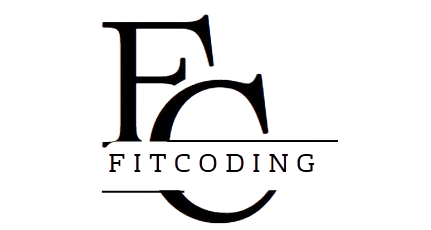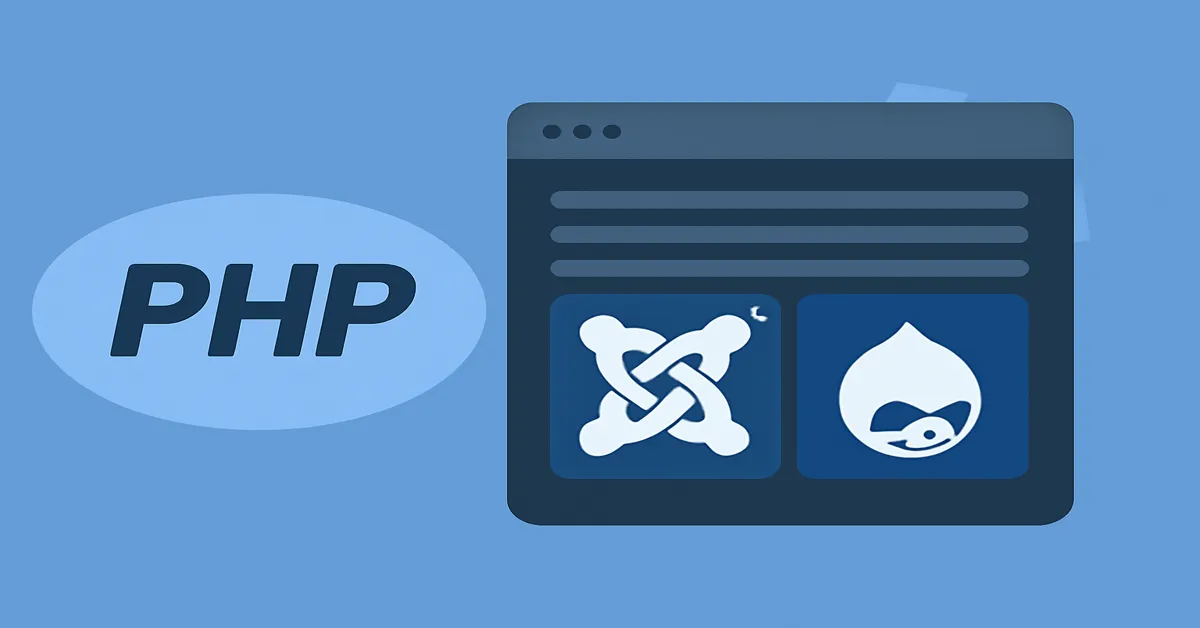In the world of modern web development, Content Management Systems (CMS) have revolutionized how websites are created and maintained. Two of the most prominent CMS platforms, Joomla and Drupal, have gained widespread adoption for building complex, data-driven websites. These platforms are known for their flexibility, scalability, and rich feature sets. But behind the scenes, there is a driving force that powers the entire system: PHP.
PHP (Hypertext Preprocessor) is a widely-used server-side scripting language that plays a critical role in the functionality of CMS platforms. It is the core language that powers the back end of Joomla and Drupal, handling tasks such as database interaction, user management, and content rendering. But what makes PHP such a powerful language for CMS platforms? How does it work within Joomla and Drupal to create the seamless experiences users expect? In this article, we’ll explore the pivotal role PHP plays in these content management systems, its advantages, and how it contributes to the success of Joomla and Drupal.
1. The Role of PHP in Content Management Systems
At its core, PHP is designed to handle server-side logic, which allows dynamic interaction with databases and the creation of content that changes based on user input. In the context of a CMS, PHP acts as the intermediary between the server, the database, and the front-end user interface. Essentially, PHP enables CMS platforms like Joomla and Drupal to dynamically generate web pages based on stored data.
When you interact with a CMS-built website, PHP runs on the server to retrieve content, such as articles, blog posts, or user-generated comments, from the database. It then assembles the data into a web page, often with a pre-defined layout and design template, which is sent to the user’s browser. Without PHP, these systems would not be able to manage and display dynamic content efficiently.
2. How PHP Powers Joomla
Joomla is one of the most widely used open-source content management systems in the world. It’s known for its flexibility, ease of use, and extensibility. Joomla is often used to create websites ranging from small blogs to large-scale, complex portals. PHP is at the heart of Joomla, responsible for managing everything from content management to handling user interactions.
Database Interaction in Joomla
Joomla uses a relational database, typically MySQL or MariaDB, to store content. When a user requests a page, PHP retrieves the necessary data from the database and populates it into a template. The entire process is seamless, and users see the final output in their browsers. PHP handles this process efficiently by using SQL queries to fetch data and then rendering it in a web-friendly format.
The main advantage of using PHP here is that it allows Joomla to be highly dynamic. For example, when users create or update articles, PHP interacts with the database to store that information and display it whenever needed.
PHP in Joomla’s Extensions and Modules
One of the standout features of Joomla is its extensibility. Joomla has a robust system of extensions, which include components, modules, and plugins. PHP plays a crucial role in these extensions by providing the logic needed to customize Joomla’s functionality.
- Components: Components are the main functional building blocks of Joomla. They provide the core functionality of a website, such as user management, content display, and e-commerce capabilities. PHP is used to define the logic of these components, such as fetching data from the database and rendering it on the website.
- Modules: Modules are smaller sections that run within Joomla components. Examples include sidebars, banners, and other widgets. PHP is responsible for the dynamic generation of content in modules by connecting to the database and executing the necessary queries.
- Plugins: Joomla plugins extend the functionality of components and modules. They are smaller pieces of code that execute specific tasks when certain events occur. For instance, a plugin may be used to handle form submissions or implement custom SEO features. PHP ensures that plugins interact with the CMS in a way that extends its capabilities.
PHP’s Role in Joomla’s Template System
The Joomla template system is another key feature powered by PHP. Templates determine how a website looks and feels, including the layout, color scheme, and typography. Joomla’s templating system uses PHP to dynamically insert content into predefined layout files.
PHP’s role in this system is to generate the correct content dynamically, based on user input or database data, and then insert it into the template’s placeholders. This allows for flexible design that can easily be adjusted or modified, without altering the core functionality of the website.
Security and PHP in Joomla
PHP also plays a significant role in Joomla’s security mechanisms. The language is used to write code that prevents SQL injection, cross-site scripting (XSS), and other security vulnerabilities. For example, Joomla uses PHP to validate and sanitize user inputs, ensuring that any data submitted via forms is safe to store in the database and display on the website. This is especially important when handling user-generated content, such as comments or blog posts.
3. How PHP Powers Drupal
Much like Joomla, Drupal is a highly extensible content management system known for its flexibility and scalability. However, Drupal is often seen as a more robust and enterprise-level CMS, used by organizations such as The Economist, The White House, and Tesla. PHP is a core part of Drupal’s architecture, and it powers a variety of features from content rendering to user authentication.
PHP in Drupal’s Modular System
One of Drupal’s most powerful features is its modular architecture. Modules in Drupal add specific functionality to the core system, much like extensions in Joomla. PHP is used extensively within Drupal’s modules to handle custom logic, database interaction, and content management.
- Core Modules: Drupal’s core modules handle essential functionality, such as user authentication, content creation, and taxonomy. PHP drives the logic behind these modules, ensuring data is retrieved from the database and presented correctly to users.
- Custom Modules: Developers can create custom modules in Drupal to add specific features or functionality. PHP is used to write the logic for these custom modules, allowing them to interact with Drupal’s core system and database seamlessly.
Database Interaction in Drupal
Like Joomla, Drupal relies on a relational database to store and manage data. Typically, Drupal uses MySQL or PostgreSQL as the database backend. PHP is responsible for querying the database, fetching content, and rendering it for display.
For instance, when a user visits a page in a Drupal-powered website, PHP executes a query to retrieve the necessary content from the database and then dynamically generates the HTML that will be sent to the user’s browser.
Drupal’s Theming System and PHP
Drupal’s theming system allows developers to control the design and layout of the website, much like Joomla’s template system. PHP is heavily involved in this process by ensuring that dynamic content is inserted into predefined templates. Theming in Drupal is highly customizable, with PHP used to generate the correct data for each element.
For example, when creating a custom theme, a developer might write PHP code that outputs specific content, like a list of recent articles or user comments, directly into the theme’s template files.
PHP and Drupal’s API
Drupal provides an API (Application Programming Interface) that allows developers to interact with the core system. This API is powered by PHP and gives developers the ability to manipulate content, create custom queries, and add additional functionality to their websites. PHP provides the logic behind Drupal’s API functions, ensuring that developers can create custom solutions without needing to modify the core codebase.
Security and PHP in Drupal
Security is another area where PHP plays a critical role in Drupal. Drupal is known for its strong security features, and PHP is used to write the code that ensures user input is validated, sanitized, and protected against common threats like SQL injection and cross-site scripting (XSS).
Drupal uses PHP to implement security mechanisms such as password hashing, session management, and access control, ensuring that sensitive data is protected and that only authorized users can access specific resources.
4. Benefits of PHP for Joomla and Drupal
PHP offers several advantages that make it an ideal choice for powering CMS platforms like Joomla and Drupal. Some of these advantages include:
1. Ease of Use
PHP’s syntax is relatively simple and easy to learn, which makes it an ideal language for content management systems. Developers can quickly start building dynamic, data-driven websites without needing to be experts in server-side programming.
2. Flexibility and Customization
Both Joomla and Drupal rely on PHP’s flexibility to allow for extensive customization. Whether it’s developing a custom module in Drupal or building an extension in Joomla, PHP enables developers to create tailored solutions that meet specific business requirements.
3. Large Community and Support
PHP’s vast community of developers provides a wealth of resources, tutorials, and libraries. Both Joomla and Drupal benefit from this extensive community support, as developers can easily find solutions to common problems, troubleshoot issues, and extend the functionality of their websites.
4. Compatibility with Databases
PHP is highly compatible with MySQL, which is a popular choice for storing website data. Both Joomla and Drupal leverage PHP’s database connectivity to interact with MySQL databases, allowing for fast, reliable data retrieval and storage.
5. Open-Source and Cost-Effective
As an open-source language, PHP is free to use, which significantly lowers the cost of development. Both Joomla and Drupal are also open-source CMS platforms, which means they can be used and modified at no cost. This makes them an attractive option for individuals and businesses looking to build dynamic websites on a budget.
5. Conclusion
PHP plays an integral role in powering content management systems like Joomla and Drupal. Through its flexibility, ease of use, and powerful features, PHP allows these CMS platforms to provide dynamic, data-driven websites with robust content management capabilities. Whether you’re building a small blog, a large-scale e-commerce platform, or an enterprise-level website, PHP provides the foundation that makes it all possible.
In the case of Joomla, PHP’s role is evident in its ability to manage extensions, handle database queries, and power the templating system. Similarly, Drupal benefits from PHP’s capabilities to manage complex modules, generate dynamic content, and offer strong security features. Both platforms, powered by PHP, continue to be popular choices for developers looking to build customized and scalable websites.
For new developers or businesses looking to create websites with powerful CMS capabilities, understanding the role of PHP in Joomla and Drupal is key. By harnessing PHP’s full potential, you can create dynamic, interactive, and secure web applications that meet the needs of users today and in the future.
Read:
Creating a Futuristic Website with PHP: A Step-by-Step Guide for Modern Web Development
How to Work with Forms in PHP: A Beginner’s Guide
PHP vs. Other Server-Side Languages: A Comparison for New Developers
FAQs
1. How does PHP work with Joomla and Drupal?
PHP is the server-side scripting language that powers both Joomla and Drupal. It handles the backend logic of these CMS platforms by interacting with databases, managing user input, and dynamically generating content to be displayed in a web browser. PHP allows these systems to deliver dynamic, data-driven websites.
2. What are the key differences between Joomla and Drupal in terms of PHP usage?
Both Joomla and Drupal rely on PHP for their core functionality, but they differ in structure. Joomla uses PHP for its extensions, modules, and templates, making it easier for users to create and manage content. Drupal, on the other hand, offers a more flexible and modular system powered by PHP, making it ideal for larger and more complex projects, with a stronger emphasis on custom module development.
3. Why is PHP preferred for content management systems like Joomla and Drupal?
PHP is preferred for CMS platforms because of its simplicity, flexibility, and large ecosystem. It is well-suited for managing dynamic, database-driven content and integrates seamlessly with databases like MySQL, which are commonly used in Joomla and Drupal. PHP also provides extensive community support, making it easier to troubleshoot and extend CMS functionality.
4. What role does PHP play in database interaction for Joomla and Drupal?
PHP facilitates interaction with the databases in Joomla and Drupal by executing SQL queries to retrieve, store, and update content. PHP handles the logic behind these interactions, fetching data based on user requests (such as loading articles) and populating the webpage with dynamic content.
5. How does PHP ensure security in Joomla and Drupal?
PHP contributes to security in Joomla and Drupal by validating and sanitizing user inputs to prevent vulnerabilities like SQL injection and cross-site scripting (XSS). Both CMS platforms use PHP to implement secure login systems, password hashing, and access control, ensuring that sensitive data is protected and only authorized users can interact with the system.











